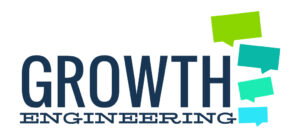3 Ways To Define Your Learning Objectives
At Growth Engineering, we’re friends with a lot of learning managers—it goes with the territory. Even though we’ve been in this game for a while now, it never ceases to amaze us when we see the lengths to which our Academy Admins go to engage their learners and give them what they need to go further.

Although these learning initiatives take all shapes and forms, they all have one thing in common—they start with a learning objective. A learning objective states what the learner should be able to do by the time they’ve finished the training.
Without a solid learning objective, you’re simply pushing content in front of learners and letting them figure out the significance by themselves. Although there’s a lot to be said for learning informally in this way, it’s hardly the basis for a successful formal training program.
More importantly, it's practically impossible to demonstrate your training's ROI if you don't track the financial impact of the training. Of course, if you don't measure this at the start and set a goal, you'll never be able to make a case for a bigger training budget.
So, with that in mind, here are a few pointers to help you clearly define your learning objectives:
1. Start With A Clear Goal
This is the first and most important stage of creating a good learning objective. If in your excitement to create learning superheroes, you decide to skip this step, don’t be surprised if you don’t end up with a measurable ROI.
Although creating learning superheroes is a worthy cause, it’s not a SMART goal. All goals should be Specific, Measurable, Achievable, Realistic, and Time-bound.
If you start out simply hoping for the best, you might get lucky, but you stand a much better chance of getting the training budget you deserve if you form a clear picture of what that success looks like.
2. Figure Out What You Need
Once you know where you want to end up, it’s time to work out how far along that road your learners are. Training Needs Analysis is what it sounds like—it’s the process of analyzing your learners and the business as a whole to figure out which areas are in most need of training.
Training Needs Analysis takes into consideration things like past training initiatives, current applications, and any upcoming changes to the organization.
If you start planning a learning objective without knowing where your learners currently stand, you could end up wasting a lot of time creating training resources that nobody really needs. Worse still, you could miss that vital knowledge gap that’s potentially costing your business a small fortune.
But if you can find these profit leaks early on and nip them in the bud with an effective training initiative, you can take the credit and claim the ROI for the training department.
3. Decide How The Learning Will Be Delivered
Once you’ve got a SMART goal worked out, and you know your training needs like the back of your hand, you can start figuring out how you’re going to deliver the training. At this stage, you should have a good idea of what’s possible in your training plan.
Let’s say you’ve got a world-beating, game-changing monster of a learning objective in your mind. This objective will change your organizational culture, and it’ll make you look like such a hero, they’ll have a plaque with your name on it mounted on the front wall.
On closer inspection, however, you realize that in order to achieve this objective, you’ll need to hire a bunch of instructors, build a futuristic training facility, and install a high-tech 3D virtual simulator.
Although that would, admittedly, be pretty awesome, you might have a bit of trouble convincing the finance team to give you the budget. At this stage, you have 2 choices:
- Go back to your learning objective and, with tears in your eyes, start the process of paring it back.
- Research other ways to make your training dreams come true without the need for a hefty revenue injection.
We don’t want you to sacrifice your master plan just because of a prohibitive training budget. The fact is that your organization needs to invest in a training program that can address its major goals. You don’t necessarily need to spend a fortune to make effective training, but whatever the investment, you need to make sure that you can demonstrate that all-important return.
Luckily for you, we’ve got a workbook with your name on it that’ll help you use every available tool and resource to measure your ROI and identify where your training is having a real impact. It even has its own handy ROI calculator to make life even easier! All you need to do is download the free eBook: How to Win Your Training Budget: The Complete Guide to Training Evaluation.

Originally published at www.growthengineering.co.uk.

